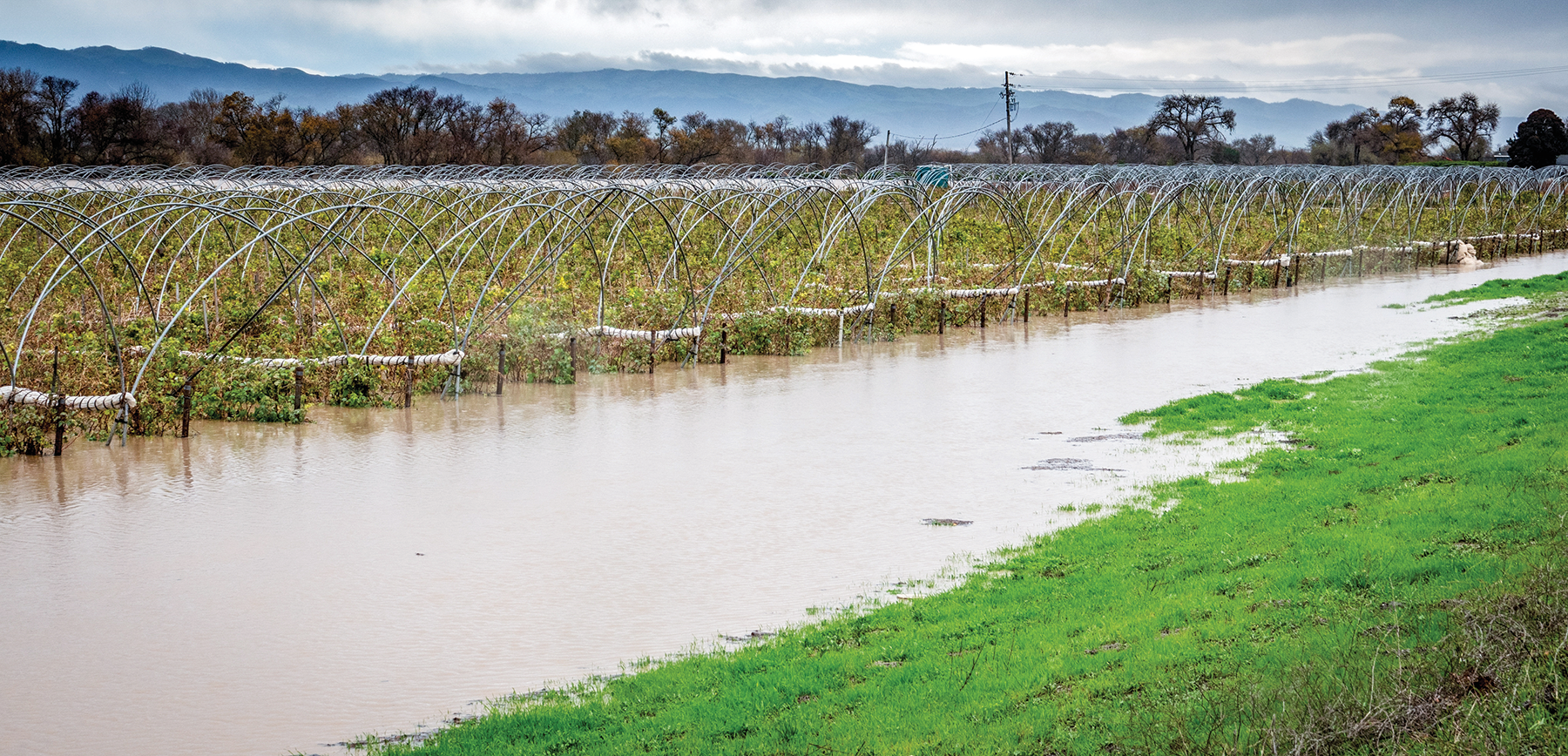Tech firm aids Salinas Valley farmers after flooding

By Caitlin Fillmore
After January’s deluge of atmospheric storms breached berms and levees on the Salinas River, flooding more than 20,000 acres of Monterey County farm fields, growers turned to technology to help assess the damage and determine which crops were salvageable.
GeoVisual Analytics, a Denver firm that opened in the Salinas Valley vegetable-growing region in 2017, got busy mining its trove of digital data to help guide farmers.
Growers in the famed Salad Bowl look to the firm’s technology to help forecast planting and inspect crops, using drones and NASA-funded artificial intelligence algorithms.
By layering maps of the flooding damage with the digital maps of a grower’s land, GVA helped farmers quickly assess which areas faced the highest risk for crop damage, the company said.
Charles McGregor, GVA general manager, said the technology offered farmers a sophisticated data-gathering service as an alternative to “everybody running around, manually inspecting and hoping.”
The company is one of several firms that operate out of the Western Growers Center for Innovation and Technology, which is housed at Taylor Farms’ headquarters in Salinas.
Dennis Donohue, executive director of the center, said GVA is an example of the type of companies the center has helped attract, so farmers can benefit from new technologies.
“The basic idea is to get a company to the right people,” Donohue said.
The center serves as an agricultural business incubator and networking hub for members of Western Growers Association, a nearly 100-year-old network of local and regional farmers across California, Arizona, Colorado and New Mexico.
Some tech companies associated with the center chose to relocate to Salinas, Donohue said. Two companies producing autonomous agricultural robots—Farmwise Lab Inc. and Naio Technologies—now call Salinas home.
Others in the center’s list of three dozen affiliated startups are headquartered outside the Salinas Valley but connect to the Western Growers network through this hub.
Others, such as renewable energy company Concentric Power, and Heavy Connect, a mobile app to assist producers with regulatory compliance, now operate out of the center, Donohue said.
GeoVisual Analytics had no connection to Salinas Valley agriculture before partnering with the technology center. Soon, the company was making connections with farmers, said McGregor, noting the center “is how I met most of our customers in the first place.”
He added, “It’s hard for us to do what we did without them in some ways.”
McGregor said the firm was founded to help farmers “digitize their expertise.” But he credits the Salinas technology center with helping GVA “speak the right language” and meet critical partners in the farming region.
In the beginning, he acknowledged, his firm “thought we could do things we couldn’t.”
“We didn’t deliver,” McGregor said. “We had to learn more about what (farmers) wanted,” he said. “Luckily, those customers say we actually listened, and we gave them what they wanted. They don’t mind if you fall down as long as you admit it.”
After the January storms, McGregor said GVA was in position to aid growers and do so in a common language. He said the firm was able to answer questions such as “how do I allocate personnel and talent to the right places and test the right soil to know the highest risk area?”
“When transitioning after a weather event, we helped them make decisions about which fields to keep,” he said.
GVA typically serves large-scale growers, shippers and processors, and McGregor said the company hopes to expand to include more commodities outside of vegetable and specialty crops and be a more feasible option for small producers.
McGregor describes GVA’s technologies as “boots-on-the-ground tools.” But transitioning to agricultural clients with actual boots on the ground has been a process.
He said his farming clients run the full spectrum, with some using spreadsheets and others sticking to pen and paper records.
“I know guys who can forecast lettuce … They give me a number and they just know,” McGregor said. “But the younger population isn’t going to do it that way.”
He said new technologies mean that “the new person coming in doesn’t have to forecast for 50 years to figure it out.”
Another lesson the agricultural technology firm learned was about the varied demands that farmers juggle daily.
McGregor said he sees more farmers getting excited to make data-driven decisions and using advanced technologies, such as drones, to capture information.
The willingness of agricultural partners to evolve and adapt to technology influenced the company to embrace a new philosophy, which includes making sure its technology team understands farmers, their needs and the burdens they face.
“We kept thinking, ‘How come they’re not interacting with forecasts six weeks out?’ Because they are drowning in today and tomorrow’s problems,” McGregor said. “Sometimes all the cool analytics we build are the cart before the horse. Also, we need to make sure people go to the right field.”
(Caitlin Fillmore is a reporter based in Monterey County. She may be contacted at cslhfillmore@gmail.com.)




